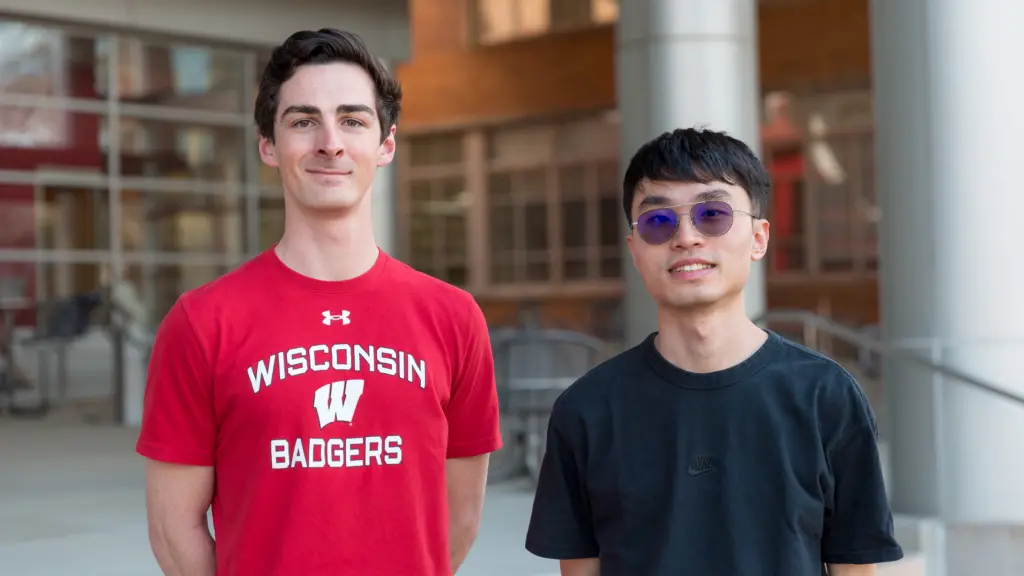The construction industry workforce is aging and facing major shortages to keep pace with demand across the United States. According to the Associated Builders and Contractors, almost a quarter of the construction workforce is older than 55—and the industry needs to hire more than half a million additional workers on top of normal hiring in 2023 to close the gap.
While meeting this massive construction worker shortfall will take a much broader effort, researchers at the University of Wisconsin-Madison are studying how wearing EXOs (a general term including both exosuits and exoskeletons) can help existing workers do more. “We can use EXOs to increase the ability of a single worker,” says Wei Han, a graduate student in civil and environmental engineering at UW-Madison. “EXOs may help workers do more intensive work. We hope that they can also help all workers have a better experience and protect their health and safety while going about their jobs.”
They’re studying three passive EXOs: the HeroWear Apex, Hilti EXO-01, and Ekso Evo. Passive EXOs use springs and tension to support movement; the research team is focusing on suits that aid with back and shoulder support, says collaborator Tyler Bennett, a graduate student in mechanical engineering at UW-Madison. Exosuits are made of soft, flexible fabric, while exoskeletons contain rigid supporting structures.
 Graduate students Tyler Bennett, left, and Wei Han are working together on a research project to study how exosuits and exoskeletons can support workers in the construction industry. Credit: Joel Hallberg.
Graduate students Tyler Bennett, left, and Wei Han are working together on a research project to study how exosuits and exoskeletons can support workers in the construction industry. Credit: Joel Hallberg.
“A lot of work-related musculoskeletal injuries are in the back,” he says. “So, we wanted to find one that really focuses on alleviating lower back strain. We also wanted to add options providing shoulder support because a lot of construction work involves overhead work.”
Bennett and Han have collaborated with employers from the national construction firm Mortenson since January 2022 to test the EXOs while workers perform various tasks like pushing a gondola or raising an object overhead. They collected data from those experiments to assess how EXOs impact construction workers; results so far show that EXOs helped reduce task completion time, though workers responded differently to them, and have mixed opinions about them. The researchers described their study in the journal MDPI Buildings in March 2023. They’ve also published a conference paper at the 2022 Winter Simulation Conference.
Their testing so far has focused on workers performing prescribed tasks. Looking ahead, however, Bennett and Han hope to gather more data from laborers going about their normal work. They also plan to diversify the study’s participants, especially including women workers, and hope to test on more active construction sites.
“The research is primarily focused on real construction activities,” Bennett says. “In the future, data collection will focus on workers wearing an EXO for their day-to-day work. We’re developing a way for us—rather than having to go in person and test people—to put sensors in the EXOs themselves and give them to construction companies to use. That will involve remote data collection for long-term studies, rather than just daylong sessions.”
As EXO development continues to advance, the two say there may be more options available that can help construction workers—especially those who have worked for a long time in the field and have health issues.
“EXOs aren’t yet well-developed or prepared to be used in construction sites,” Han says. “By doing these feasibility studies, we hope to assess which ways they can be helpful in construction sites, or what should be modified and improved to really get to the point where they can be viable tools.”
Other authors on the paper include Mead Witter Foundation Associate Professor of Mechanical Engineering Peter Adamczyk; Zhenhua Zhu, the Mortenson Assistant Professor of Civil and Environmental Engineering; Michael Wehner, an assistant professor of Mechanical Engineering; Raj Veeramani, the E-Business Chair Professor of Industrial and Systems Engineering; Fei Dai, an associate professor in the Wadsworth Department of Civil and Environmental Engineering at West Virginia University; and Dilruba Mahmud, a civil and engineering graduate research assistant at West Virginia University.
Featured image caption: Mechanical engineering graduate student Tyler Bennett lifts a case overhead with help from an exoskeleton. Exoskeletons have rigid supporting structures that make it easier for users to perform certain actions, which may prove useful in the construction field. Credit: Joel Hallberg.